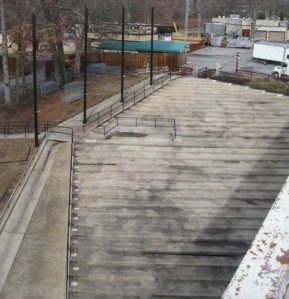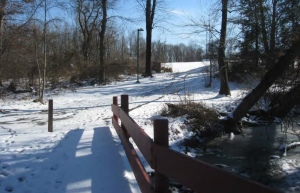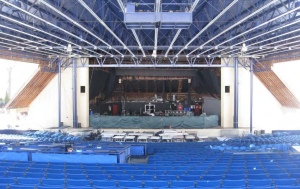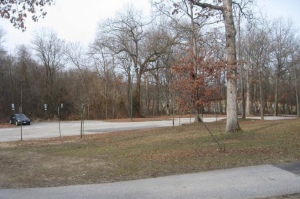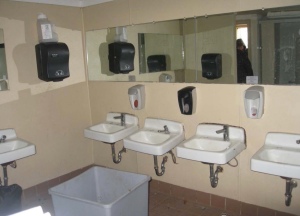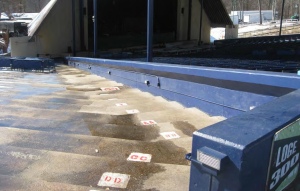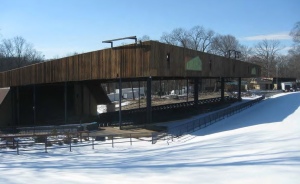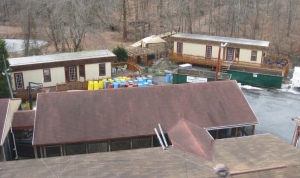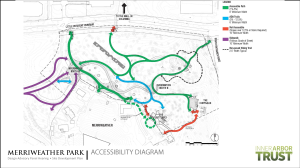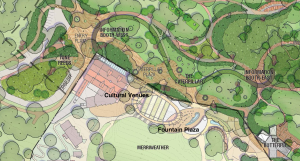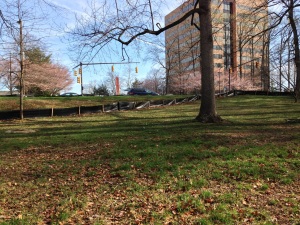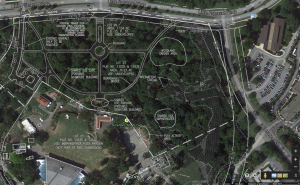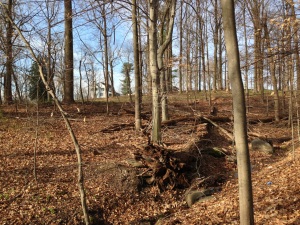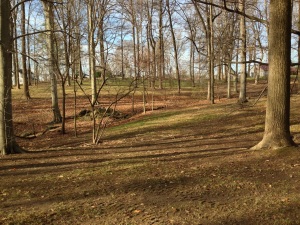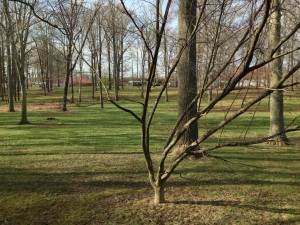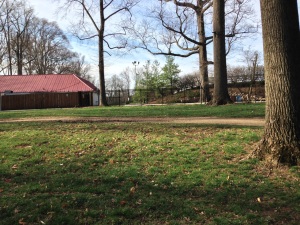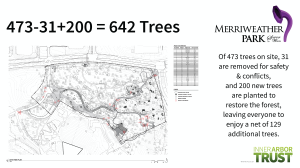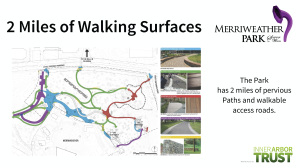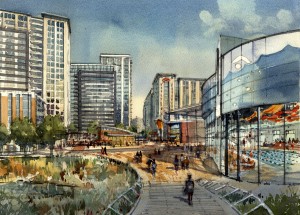In this post I look into the current schedule for the proposed Merriweather Post Pavilion renovations. For background information see part 1 and part 2 of my discussion of the renovations themselves and their budgeted costs.
Recall again that the costs and dates for the renovations are laid out in Exhibits A and B of Amendment 2 to Amendment 12 [PDF] to Council Bill 24-2014. The proposed renovations are based on (but not identical to) the set of renovations described in the recent draft 2014 Ziger/Snead Merriweather Post Pavilion Physical Review Update [PDF], which updated the Ziger/Snead report included in the 2005 final report of the citizens advisory panel on Merriweather Post Pavilion [PDF].
Exhibit A of Amendment 2 to Amendment 12 divides the overall set of renovations into five phases (numbered I through V). Exhibit B assigns dates and durations to the activities associated with each phase (here numbered 1 through 5).1 Because of the way the Howard County planning and zoning process works, Phase 1 will be handled differently than Phases 2 through 5, as discussed below. The various renovation projects are divided between the phases as follows:
Phase 1. This phase contains various projects that are less disruptive and do not affect the main pavilion structure, including utility infrastructure work, the first subproject of concessions/restrooms renovation, and replacement of windows in the administration building. (Note that it’s not clear from Exhibit A exactly which concession facilities and restrooms will be affected by this phase.) Design work for Phase 1 begins this summer, with actual construction scheduled to begin February of 2015 and be completed by the end of June 2015.
Phase 2. This phase contains all of the work on the main pavilion structure, including replacing the seating, raising the main pavilion roof, adding two new roofs to cover the loge areas, and replacing the stagehouse (including widening the proscenium opening). This phase also sees the completion of subproject 1 of box office renovation. (Again it’s not clear from Exhibit A which box office will be renovated or replaced in this phase; however since the South/East box office is apparently in more need of work, it may be done first.) Finally, this phase also includes phase 1 of the site improvements, presumable on the west side of the property (since the second phase is for the east side). Design work for this and subsequent phases is slated to begin spring and summer of 2015 and be complete by the end of 2015. Construction for Phase 2 is scheduled for November 2016 through March 2017, during the off-season at Merriweather.
Phase 3. This phase completes the work on the site improvements, restrooms, concession facilities and box offices. Construction for Phase 3 is scheduled for November 2017 through March 2018.
Phase 4. This phase includes construction of the new dressing rooms and catering areas for performers, as well as a new stage. Since this latter project was not included in the draft 2014 Ziger/Snead report it’s not clear exactly what it entails. This phase also includes some parking-related work, although again it was not included in the draft 2014 report. Construction for Phase 4 is scheduled for November 2018 through March 2019.
Phase 5. This phase includes only two small projects, putting a sprinkler system in the 9:32 Club and creating a new area for trash and recycling. It’s worth noting that even though these are small projects they are both called out specifically in Amendment 2 to Amendment 12, along with raising the main roof and bringing all facilities up to code. It’s possible that this was done in order to ensure that the called-out projects received particular priority and would not be put on the chopping block in the event of funding shortfalls or construction delays. Construction for phase 5 is scheduled for November 2019 through March 2020, with the latter date marking the “substantial completion” of all projects.
Starting construction is dependent on completion of Howard County’s review process for downtown Columbia revitalization [PDF]. This 16-step process requires the creation of a Final Development Plan (FDP) and a Site Development Plan (SDP), along with an Environmental Concept Plan (ECP). Despite its name, the FDP actually comes before the SDP, with the SDP containing much more detail than the FDP.2 Both the FDP and the SDP must be approved by the Howard County Planning Board before a building permit can be issued.
In the case of Merriweather renovations, per Exhibit B the planning process for the FDP is scheduled to run roughly from August 2014 through April 2015. Since the first step in the process is to hold a pre-submission community meeting prior to submitting the FDP to the Planning Board for review, the public should get a closer look at the overall renovation plans later this summer. Submission of the subsequent SDP should be about a year later, with the review process scheduled to run from August through December of 2015. Assuming the SDP is approved and the necessary building permit(s) issued, Phase 2 construction (including raising the main pavilion roof) could then begin in November 2016, after completion of the 2016 Merriweather season.
But that raises an interesting question: Phase 1 construction is supposed to start February 2015, before the SDP is even submitted, much less approved. How can that be? The answer, based on Exhibit B, is that there is apparently an existing SDP that can be put through a special “redline” review process, “used when minor modifications or revisions are required for active or inactive commercial site development plans”.3 As Exhibit B notes, beginning Phase 1 construction is dependent on the suggested modifications to the pre-existing SDP being approved; otherwise Phase 1 construction would have to be delayed until the Phase 2 date.
This concludes my review of the proposed Merriweather Post Pavilion renovations. Hopefully I’ll be posting again on this topic later this year when the first pre-submission community meeting is held.
1. Exhibit B refers to “ewks” and “emons”. I presume these terms refer to “estimated weeks” and “estimated months” respectively.
2. As an example, compare the FDP for the Warfield neighborhood [PDF] (next to the Mall in Columbia) with the SDP for Warfield neighborhood block W-1, parcels D-1 and D-2 [PDF]. The FDP contains descriptions of the blocks within the neighborhood (W-1, W-2, and W-5) and the parcels within the blocks, what types of buildings are planned to be built, number of units and square footage, and so on. The SDP goes beyond that to show the actual buildings planned to be constructed and the fine details of the surrounding roads, sidewalks, utilities, landscaping, and so on.
3. In searching development plans on the Howard County web site I found only one SDP from 1989 (SDP-89-222) that I thought might be relevant; however given the limited information on the site it’s impossible to tell for sure.
